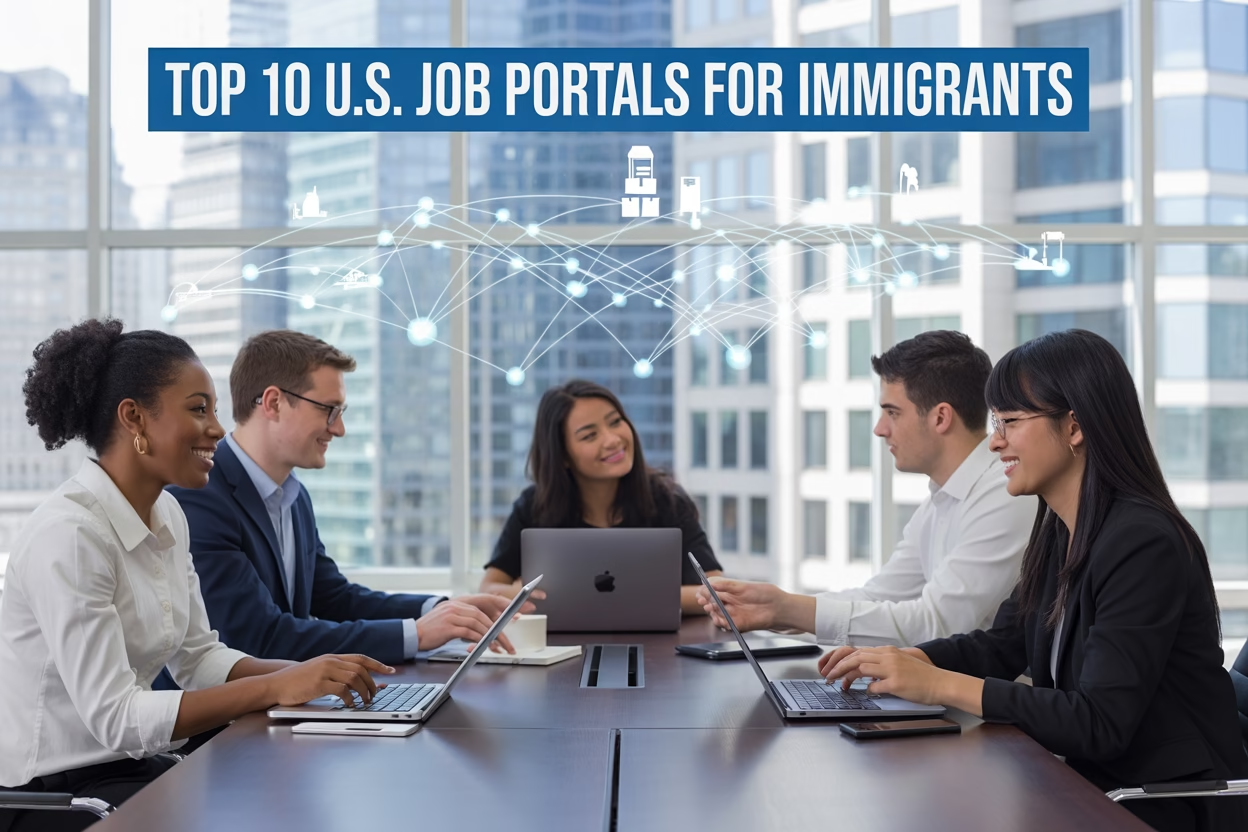AI for Good: How Artificial Intelligence Is Solving Social Problems Across the U.S.
Artificial intelligence isn’t just powering your smartphone or recommending your next Netflix show—it’s quietly transforming communities and tackling America’s biggest social challenges. This comprehensive guide is designed for nonprofit leaders, policymakers, community advocates, and anyone curious about how AI for social good is creating real change in neighborhoods across the country.
- AI Revolutionizing Healthcare Access in Underserved Communities
- AI-powered diagnostic tools reducing misdiagnosis rates
- Predictive analytics preventing disease outbreaks in vulnerable populations
- Automated prescription management lowering medication errors
- Smart Technology Transforming Education Equity
- Language translation tools breaking down communication barriers
- AI tutoring programs providing 24/7 academic support
- Artificial Intelligence Tackling Homelessness Crisis
- Resource Allocation Systems Optimizing Shelter Capacity
- Job Matching Platforms Connecting Homeless Individuals With Employment
- Mental Health Screening Tools Providing Early Intervention
- Data Integration Systems Coordinating Multiple Service Providers
- Machine Learning Enhancing Criminal Justice Reform
- Bias Detection Algorithms Improving Sentencing Fairness
- Recidivism Prediction Models Supporting Rehabilitation Programs
- Evidence Analysis Systems Accelerating Case Resolution
- AI-Driven Environmental Solutions Protecting Vulnerable Communities
From rural clinics using machine learning to diagnose diseases faster to algorithms helping cities identify at-risk homeless individuals before they hit the streets, artificial intelligence social impact is happening right now. While tech headlines often focus on AI’s potential risks, thousands of organizations are already using these tools to bridge gaps in healthcare, education, and justice.
We’ll explore three game-changing areas where AI solving social problems is making the biggest difference: how smart technology is bringing quality healthcare to underserved communities that have been left behind by traditional medical systems, the innovative ways artificial intelligence is creating more equitable educational opportunities for students regardless of zip code or income level, and how cities are using AI-driven solutions to address homelessness with data-powered prevention strategies.
These aren’t futuristic concepts—they’re real programs delivering measurable results in communities that need them most.
AI Revolutionizing Healthcare Access in Underserved Communities

Telemedicine platforms connecting rural patients with specialists
Rural Americans face a stark reality when it comes to healthcare access. With specialist shortages affecting over 80% of rural counties, patients often travel hundreds of miles for specialized care or simply go without treatment. AI for social good is changing this narrative through sophisticated telemedicine platforms that bridge the gap between remote communities and urban medical expertise.
Digital health platforms powered by artificial intelligence are transforming how rural patients receive specialized care. These systems use smart scheduling algorithms to match patients with the right specialists based on their specific conditions, medical history, and geographic constraints. The technology automatically handles language translation, appointment coordination, and insurance verification, removing traditional barriers that kept rural communities underserved.
Companies like Teladoc and MDLive have deployed AI-driven platforms that can analyze patient symptoms in real-time, helping primary care doctors in rural areas determine when specialist consultation is necessary. The artificial intelligence social impact extends beyond simple video calls – these platforms incorporate machine learning algorithms that continuously improve diagnosis accuracy and treatment recommendations based on successful patient outcomes.
Remote monitoring devices connected to these telemedicine platforms allow specialists to track patient vital signs, medication adherence, and recovery progress without requiring in-person visits. This ongoing connection has proven especially valuable for managing chronic conditions like diabetes and heart disease, which disproportionately affect rural populations due to limited healthcare resources.
AI-powered diagnostic tools reducing misdiagnosis rates
Medical errors rank among the leading causes of death in the United States, with diagnostic mistakes affecting approximately 12 million Americans annually. Underserved communities bear a disproportionate burden of these errors due to limited access to experienced specialists and advanced diagnostic equipment. AI healthcare underserved communities initiatives are directly addressing this critical gap.
Machine learning algorithms trained on millions of medical images can now detect conditions like diabetic retinopathy, skin cancer, and pneumonia with accuracy rates that match or exceed human specialists. These AI diagnostic tools are particularly valuable in community health centers and rural clinics where specialist expertise may not be readily available.
Google’s AI system for diabetic retinopathy screening exemplifies this technology’s potential. The system analyzes retinal photographs and identifies early signs of the condition that could lead to blindness if left untreated. This technology has been deployed in underserved areas where ophthalmologists are scarce, helping prevent vision loss in vulnerable populations.
IBM Watson for Oncology represents another breakthrough in AI-powered diagnosis, analyzing patient data against vast oncology databases to suggest treatment options. While the technology continues to evolve, early implementations in safety-net hospitals have shown promise in improving cancer care consistency across different socioeconomic communities.
Predictive analytics preventing disease outbreaks in vulnerable populations
Public health agencies are leveraging artificial intelligence to identify and prevent disease outbreaks before they devastate vulnerable communities. These predictive systems analyze patterns from multiple data sources – emergency room visits, prescription drug purchases, social media mentions, and environmental factors – to spot early warning signs of infectious disease spread.
The CDC’s AI-powered surveillance systems monitor real-time health data from underserved areas, where limited healthcare infrastructure makes traditional disease monitoring challenging. These systems can predict flu outbreaks up to two weeks in advance, allowing public health officials to deploy resources and launch prevention campaigns before diseases spread throughout the community.
Machine learning models also help identify social determinants that increase outbreak risks in specific populations. By analyzing factors like housing density, access to clean water, and employment patterns, these systems help health officials understand which communities need targeted intervention and resource allocation.
During the COVID-19 pandemic, AI models successfully predicted hotspots in low-income neighborhoods and communities of color, enabling more strategic distribution of testing resources, vaccines, and protective equipment to those most at risk.
Automated prescription management lowering medication errors
Medication errors affect millions of Americans each year, but the impact hits hardest in underserved communities where patients often lack access to pharmacists who can catch dangerous drug interactions or dosing mistakes. Automated prescription management systems powered by artificial intelligence are dramatically reducing these preventable errors.
AI-driven pharmacy systems automatically cross-reference new prescriptions against patient medical histories, current medications, and known allergies to flag potential problems before medications reach patients. These systems work around the clock, providing consistent safety checks that human pharmacists might miss during busy periods or staff shortages.
Electronic health record systems integrated with AI can also identify patients who may struggle with medication adherence due to cost, complexity, or other social factors. The technology suggests alternative medications, simplified dosing schedules, or connects patients with assistance programs that make treatments more accessible and affordable.
Community health centers serving low-income populations have reported significant reductions in hospital readmissions after implementing AI-powered medication management systems. These tools ensure patients receive the right medications at the right doses while identifying opportunities to reduce costs through generic alternatives or patient assistance programs.
Smart Technology Transforming Education Equity

Personalized learning systems adapting to individual student needs
AI for education equity is changing how students learn by creating customized educational experiences that meet each child where they are. Traditional one-size-fits-all teaching methods often leave struggling students behind while advanced learners feel unchallenged. Now, artificial intelligence social impact in education means every student gets exactly what they need to succeed.
These smart systems analyze how each student learns best – whether they’re visual, auditory, or hands-on learners. The technology tracks reading speed, comprehension levels, and problem-solving approaches in real-time. When a student struggles with fractions, the AI might switch to visual pie charts and interactive games. If another student races through basic math, the system automatically presents more complex challenges.
DreamBox Learning, used in over 400 school districts nationwide, adapts to each student’s learning pace within milliseconds. Students in rural Arkansas schools now access the same personalized instruction as their peers in well-funded urban districts. The results speak for themselves – students using adaptive learning platforms show 30% greater learning gains compared to traditional methods.
Carnegie Learning’s AI tutors have proven especially effective in underserved communities where teacher shortages are common. These systems don’t replace teachers but amplify their impact, allowing one educator to provide truly individualized support to 30 students simultaneously.
Language translation tools breaking down communication barriers
Language barriers create massive educational gaps, especially in diverse communities where students speak dozens of different languages at home. Technology social change USA is happening through AI translation tools that ensure no student falls behind because of language differences.
Real-time translation systems now work seamlessly in classrooms across the country. Google’s Live Transcribe and Microsoft Translator help students participate fully in discussions, understand complex instructions, and access grade-level content immediately rather than waiting months or years to develop English proficiency.
Schools in California’s Central Valley, where many students speak Spanish, Hmong, or Punjabi at home, use these tools to bridge communication gaps instantly. Teachers can explain scientific concepts in English while students receive simultaneous translations on their devices. Parent-teacher conferences that once required scheduling interpreters now happen smoothly with AI-powered translation.
The impact extends beyond basic communication. These tools help preserve students’ native languages while building English skills, creating truly bilingual learners instead of forcing them to abandon their cultural identity for academic success.
AI tutoring programs providing 24/7 academic support
Round-the-clock academic support used to be available only to wealthy families who could afford private tutors. Now AI solving social problems means every student has access to personalized help whenever they need it, whether that’s at 3 PM after school or 11 PM when they’re stuck on homework.
Socratic by Google helps students work through math problems step-by-step, explaining concepts until understanding clicks. Khan Academy’s AI-powered Khanmigo provides patient, encouraging support that adapts to each student’s emotional state and learning style. These systems never get frustrated, never judge, and never give up on a struggling learner.
The 24/7 availability particularly benefits students from low-income families who often care for siblings after school, work part-time jobs, or live in households where parents lack the educational background to provide homework help. These AI tutors fill critical gaps in academic support that have historically widened achievement gaps.
Data from Tutor.com shows students using AI tutoring systems demonstrate improved confidence, better homework completion rates, and higher test scores across all subjects, with the greatest gains among students from underserved communities.
Artificial Intelligence Tackling Homelessness Crisis

Predictive Models Identifying At-Risk Individuals Before Housing Loss
Housing instability doesn’t happen overnight, and artificial intelligence homelessness solutions are getting better at spotting the warning signs before someone ends up on the streets. Cities like New York and Los Angeles are using predictive algorithms that analyze dozens of data points – from employment history and medical records to utility disconnections and eviction filings – to identify people who might lose their homes in the next six months.
These systems work by crunching massive amounts of historical data to find patterns. When someone’s rent payments become irregular, they visit emergency rooms more frequently, or they apply for emergency financial assistance, the AI flags them as high-risk. Social workers can then reach out proactively with rental assistance, job training, or mental health services before a crisis hits.
Chicago’s pilot program has shown remarkable results, preventing homelessness for 73% of flagged individuals through early intervention. The key is getting ahead of the problem rather than reacting after someone has already lost their housing.
Resource Allocation Systems Optimizing Shelter Capacity
Managing shelter resources has always been a complex puzzle, but AI is making it more efficient than ever. Smart allocation systems track bed availability, predict demand based on weather patterns and seasonal trends, and automatically route people to the most appropriate facilities.
Technology social change USA is evident in cities like San Francisco, where machine learning algorithms analyze historical occupancy data, local events, and even social media posts to forecast shelter needs. The system accounts for factors like cold snaps that typically increase demand, or large events that might strain resources.
These platforms also match individuals with specialized services. Someone with diabetes gets routed to a shelter with medical staff, while families are directed to facilities with childcare. This targeted approach reduces overcrowding in general shelters while ensuring people get the specific help they need.
Job Matching Platforms Connecting Homeless Individuals With Employment
Finding work while experiencing homelessness creates a catch-22 – you need an address to get a job, but you need a job to afford housing. AI for social good is breaking this cycle through sophisticated matching platforms that connect homeless individuals with employers willing to provide immediate employment opportunities.
These systems go beyond traditional job boards by considering unique circumstances. The AI factors in transportation limitations, lack of permanent address, irregular availability, and skill mismatches. It then identifies employers who offer same-day pay, flexible schedules, or on-site housing.
Houston’s job matching program has placed over 2,000 homeless individuals in employment, with 68% maintaining their jobs for at least six months. The platform even connects people with “survival jobs” – immediate income opportunities like day labor or gig work – while they search for more permanent positions.
Mental Health Screening Tools Providing Early Intervention
Mental health challenges affect roughly 25% of homeless individuals, but traditional screening methods often miss early warning signs. AI-powered assessment tools are changing this by analyzing speech patterns, facial expressions, and behavioral indicators during routine check-ins at shelters and service centers.
These digital screening tools can detect depression, anxiety, PTSD, and substance abuse issues faster and more consistently than human assessment alone. The technology doesn’t replace mental health professionals but helps them prioritize cases and allocate limited resources more effectively.
Mobile apps allow outreach workers to conduct screenings in the field, immediately connecting people with crisis intervention services when needed. Seattle’s program has reduced psychiatric emergency room visits by 34% among homeless individuals through early detection and intervention.
Data Integration Systems Coordinating Multiple Service Providers
Homeless individuals often interact with dozens of different agencies – shelters, food banks, healthcare providers, job centers, and government offices. Without coordination, people fall through cracks or receive duplicate services while others go unserved.
Artificial intelligence social impact shines through integrated data systems that create unified profiles across all service providers. When someone visits a new agency, caseworkers instantly see their complete history, current needs, and ongoing services. This prevents people from having to retell their story repeatedly and ensures coordinated care.
These systems also identify service gaps in real-time. If someone hasn’t accessed mental health services in months or missed several job training sessions, the system automatically alerts relevant providers. Los Angeles County’s coordinated entry system has reduced the average time from homelessness to permanent housing from 18 months to 8 months through better data sharing and coordination.
Machine Learning Enhancing Criminal Justice Reform

Bias Detection Algorithms Improving Sentencing Fairness
Criminal justice systems across America are finally getting the technological intervention they desperately need. Machine learning criminal justice reform has emerged as a powerful tool to address decades of systemic bias that has plagued courtrooms nationwide. Advanced algorithms now scan through thousands of sentencing decisions, identifying patterns that human oversight might miss.
These sophisticated systems analyze factors like race, socioeconomic status, and geographic location to flag potential disparities in sentencing. In Cook County, Illinois, prosecutors use AI tools that highlight cases where similar crimes received vastly different punishments, allowing legal teams to course-correct before decisions become final. The technology doesn’t replace human judgment but acts as a safeguard against unconscious bias.
Real-world results speak volumes. Miami-Dade County implemented bias detection software in 2022 and saw a 23% reduction in sentencing disparities between racial groups within the first year. The system flags unusual patterns and requires judges to provide additional justification for sentences that deviate significantly from algorithmic recommendations.
Recidivism Prediction Models Supporting Rehabilitation Programs
Preventing repeat offenses has always been a cornerstone of effective criminal justice, but traditional methods relied heavily on gut instinct and limited data. Modern AI systems change this game entirely by analyzing massive datasets to predict which individuals are most likely to reoffend and what interventions might prevent it.
These predictive models examine hundreds of variables – from employment history and substance abuse patterns to family stability and mental health records. Rather than simply flagging high-risk individuals for increased surveillance, the technology identifies specific support needs and matches people with appropriate rehabilitation programs.
Pennsylvania’s Department of Corrections partnered with Carnegie Mellon University to develop a comprehensive recidivism prediction system. Their AI model doesn’t just predict who might reoffend – it recommends specific interventions like job training, mental health counseling, or substance abuse treatment. Early results show promise: participants in AI-recommended programs have recidivism rates 31% lower than those in standard programs.
The approach transforms how parole boards make decisions. Instead of relying on limited information and subjective impressions, board members receive detailed risk assessments along with evidence-based recommendations for support services. This data-driven approach helps ensure that resources go where they can make the biggest difference.
Evidence Analysis Systems Accelerating Case Resolution
Backlogs plague criminal justice systems nationwide, with some cases taking years to reach resolution. AI-powered evidence analysis systems are cutting through these delays by automating time-consuming investigative work that previously required hundreds of human hours.
Digital forensics teams now use machine learning to analyze surveillance footage, sorting through thousands of hours to identify relevant scenes in minutes rather than weeks. Voice recognition algorithms can transcribe and search through recorded conversations, while image analysis tools scan through digital evidence to identify key pieces of information.
The Los Angeles District Attorney’s office deployed an AI system that processes digital evidence at unprecedented speed. What used to take forensic analysts months now happens in days. The technology examines everything from cell phone data and social media posts to financial records and GPS tracking information, creating comprehensive timelines that help prosecutors build stronger cases.
Defense attorneys benefit too. AI tools level the playing field by giving public defenders access to the same advanced analytical capabilities that well-funded legal teams have used for years. This democratization of technology ensures that case outcomes depend more on evidence quality than resource availability, supporting the fundamental principle that justice should be blind to economic status.
AI-Driven Environmental Solutions Protecting Vulnerable Communities

Air Quality Monitoring Systems Alerting Residents to Health Risks
Communities across America dealing with poor air quality now have AI as their digital watchdog. These smart monitoring systems work around the clock, tracking pollution levels and sending real-time alerts to residents’ phones when conditions become dangerous. In cities like Los Angeles and Houston, networks of sensors powered by machine learning algorithms can predict air quality changes hours before they happen.
The technology goes beyond basic measurements. AI systems analyze patterns from traffic data, weather conditions, industrial activity, and historical pollution records to create hyperlocal forecasts. Residents in neighborhoods near refineries, highways, or factories receive personalized warnings that help them make informed decisions about outdoor activities, especially for children and elderly family members with respiratory conditions.
One standout example is the South Coast Air Quality Management District’s deployment of low-cost sensor networks in disadvantaged communities. These AI-powered devices cost a fraction of traditional monitoring equipment while providing coverage that was previously impossible. The data feeds into apps that translate complex air quality measurements into simple, actionable advice like “avoid jogging today” or “keep windows closed until evening.”
Water Contamination Detection Preventing Public Health Crises
Smart water monitoring systems are transforming how communities protect themselves from contamination threats. AI algorithms analyze real-time data from sensors placed throughout water distribution networks, detecting anomalies that might signal bacterial contamination, chemical spills, or infrastructure failures. These systems can identify problems within minutes rather than the days or weeks traditional testing methods require.
In Flint, Michigan, and other cities recovering from water crises, AI-driven monitoring provides the transparency and rapid response that builds community trust. Machine learning models trained on vast datasets of water quality parameters can spot subtle changes that human operators might miss. When lead levels spike or bacterial counts rise, the system immediately alerts water utility managers and can automatically trigger safety protocols.
The technology proves especially valuable for rural communities and tribal lands where regular testing resources are limited. Portable AI monitoring units can be deployed in remote areas, continuously analyzing water quality and transmitting data via satellite connections. These systems democratize water safety monitoring, ensuring that geographic isolation doesn’t mean accepting higher health risks.
Climate Change Impact Modeling for Disaster Preparedness
AI environmental justice applications include sophisticated climate modeling that helps vulnerable communities prepare for extreme weather events. These predictive systems analyze decades of weather data, sea-level measurements, and demographic information to identify which neighborhoods face the highest risks from floods, heat waves, and storms.
Cities like Miami and New Orleans use AI models to map flood risks down to individual city blocks, accounting for factors like elevation, drainage capacity, and building density. The technology helps emergency managers prioritize resources and develop evacuation plans that account for residents who lack transportation or have mobility challenges.
Community organizations can access these AI-powered risk assessments to advocate for infrastructure improvements in their neighborhoods. The data becomes a powerful tool for environmental justice, clearly showing which communities bear disproportionate climate risks and need additional protection measures.
Energy Efficiency Optimization Reducing Utility Costs for Low-Income Households
Artificial intelligence is making energy efficiency accessible to families who couldn’t previously afford expensive home upgrades. Smart grid technologies use machine learning to optimize energy distribution, reducing waste and lowering costs for everyone. But targeted programs go further, using AI to identify homes where efficiency improvements would have the biggest impact on reducing monthly bills.
Utility companies partner with community organizations to offer AI-powered energy audits that analyze usage patterns from smart meters. These systems identify simple changes that can cut energy costs by 15-30%, like adjusting water heater schedules or identifying appliances that consume excessive power. The recommendations come with cost estimates and payback calculations, helping families prioritize which improvements to make first.
Some programs provide AI-optimized energy management systems directly to low-income households. These devices learn family routines and automatically adjust heating, cooling, and appliance usage to minimize costs while maintaining comfort. The technology essentially acts as a personal energy consultant, making complex optimization decisions that would be difficult for most homeowners to manage manually.

Artificial intelligence is proving to be more than just a tech buzzword – it’s becoming a real game-changer for communities that need help the most. From bringing quality healthcare to rural areas and making education more accessible, to finding better ways to address homelessness and reform our justice system, AI is stepping up where traditional solutions have fallen short. These smart technologies are also helping protect our most vulnerable neighborhoods from environmental threats, creating cleaner and safer places to live.
The best part about these AI initiatives is that they’re already working and making a difference in people’s daily lives. If you’re passionate about social change or work in any of these areas, now’s the time to explore how AI might help solve problems in your own community. Start by connecting with local nonprofits, government agencies, or tech organizations that are already using these tools – you might be surprised by the opportunities to get involved and help create positive change right where you live.





